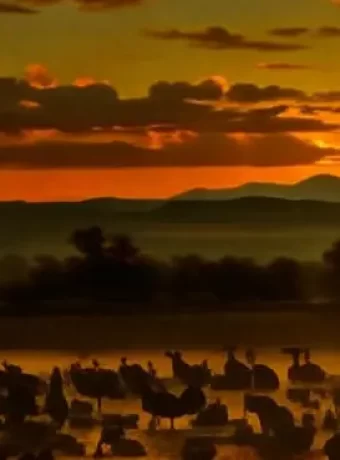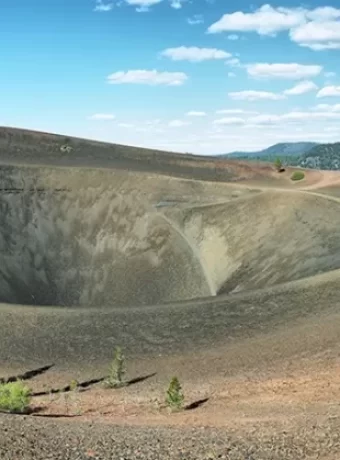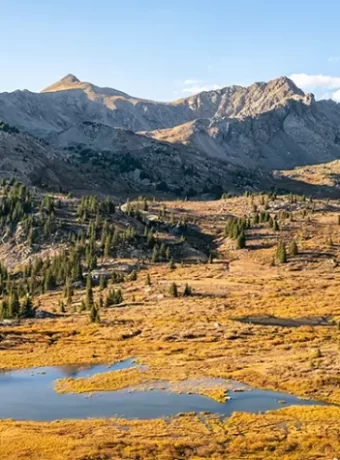DIY Deschutes River Fly Fishing Headwaters to Columbia River
Embarking on a Deschutes River Fly Fishing journey means gearing up for an adventure of a lifetime. This handbook cuts through the noise, delivering straightforward advice and useful tips to hone your fishing prowess. From understanding the best seasons for hooking steelhead and trout to picking the right gear and flies, we’ve got you covered.
You’ll learn how to pinpoint prime fishing spots along this majestic river and master techniques like spey casting. Additionally, we’ll delve into crucial camping details since finding a spot to rest after an adventurous day is key. And because water conditions play a huge role in your success, we break down what to watch out for.
Let’s not forget about playing it cool with nature; conservation practices ensure future generations get their chance at this thrilling experience too. Get ready to elevate your fly fishing game from headwaters all the way down to where the Deschutes meets the mighty Columbia.
Table Of Contents:
- Deschutes River Fly Fishing Season Overview
- Essential Gear and Fly Patterns for Success
- Prime Fishing Locations from Headwaters to Columbia
- Navigating Access Points and Transportation Methods
- The Art of Spey Casting on The Deschutes
- Camping Along The Deschutes – What You Need To Know
- The Role of Water Conditions in Deschutes River Fly Fishing Success
- Fishing Ethics & Conservation Practices on The Deschutes
- The Impact of Dams on Fish Migration Patterns
- Tackling Varied Trout Species Across Seasons
- FAQs in Relation to Diy Deschutes River Fly Fishing Headwaters to Columbia River
- Conclusion of Deschutes River Fly Fishing
- From Steelhead to Salmon in Alaska
Deschutes River Fly Fishing Season Overview
Casting a line into the Deschutes River transcends mere fishing, transforming it into an odyssey across Oregon’s awe-inspiring vistas. From its headwaters to where it meets the Columbia River, this river offers diverse opportunities for anglers targeting both steelhead and trout.
Understanding the Steelhead Run
In the Deschutes, the journey of steelhead significantly influences anglers’ chances of landing a catch. The early season kicks off in July, marking the start of an exciting period that extends all the way through New Year’s Eve. But, if you’re aiming for peak action, August is your golden month as migratory counts surge. Knowing these timings can be crucial to planning your trip.
This isn’t just about throwing a line into water; it’s about understanding nature’s rhythm and preparing accordingly. Keeping an eye on fishing updates is key now, as they shed light on the present state and how fish are acting across various segments of the stream.
Learn more about Steelhead Fly Fishing.
Essential Gear and Fly Patterns for Success
To maximize your chances on these waters, spey casting rods between 12 to 13 1/2 feet for 6 to 8 weights are recommended by seasoned anglers due to their versatility in handling various fly sizes and wind conditions—a common challenge along certain parts of this mighty river.
Selecting the right flies, like Freight Trains, Green Butt Skunks, and Steelhead Shimmers, is crucial for success on these waters. Each has proven effective across varying conditions—whether you’re dancing them atop currents or plunging them into deeper pools where shy giants lurk.

Fly Fishing the Deschutes River and surrounding lakes has left me with some fond memories. A diverse rugged country with some amazing trout and steelhead fly fishing. Being prepared and dressed for a climate as rugged as the country side. Fly fishing apparel design by fly fishers and adventurers for the the great outdoors. Hydrophobic Graphic Hoodie, perfect outer layer on cooler windy days.
Prime Fishing Locations from Headwaters to Columbia
Navigating access points along such an expansive body requires some know-how but fear not. Areas like Mack’s Canyon present thrilling challenges especially tailored towards those hunting late-season steelheads whereas Trout Creek offers serene spots perfect for teasing out wary trout amidst stunning scenery. Dive into this handbook for an in-depth look at choice fishing spots, complete with detailed charts and advice from seasoned locals aimed at independent fishers itching to uncover the untamed allure of Central Oregon on their own or alongside companions.
Remember: successful fly fishing on Deschutes demands respect—not only for its inhabitants but also for Mother Nature herself who has sculpted such incredible environments we’re privileged enough call our playgrounds.
Maximize your Deschutes River fly fishing trip by knowing steelhead runs, gearing up right, and hitting prime spots. It’s more than fishing; it’s syncing with nature and respecting the wild beauty of Oregon.
Essential Gear and Fly Patterns for Success
Fly fishing on the Deschutes River demands not just skill but also the right gear and flies. Navigating the Deschutes, from its origins down to the confluence with the Columbia, demands a tailored strategy for each of its inhabitants – steelhead and trout alike.
Spey Casting: The Preferred Technique
The technique of spey casting shines on the Deschutes due to its efficiency in covering large water areas without needing a back cast space. For those targeting steelhead, selecting a Spey rod is crucial; Spey rods ought to be 12 to 13 1/2 feet for 6 / 7 or 8 weights are ideal. These lengths provide the leverage needed for long casts and managing larger fish.
To get started with spey casting or upgrade your current setup, explore options here. It’s important to match your rod with a high-quality line designed specifically for spey techniques.
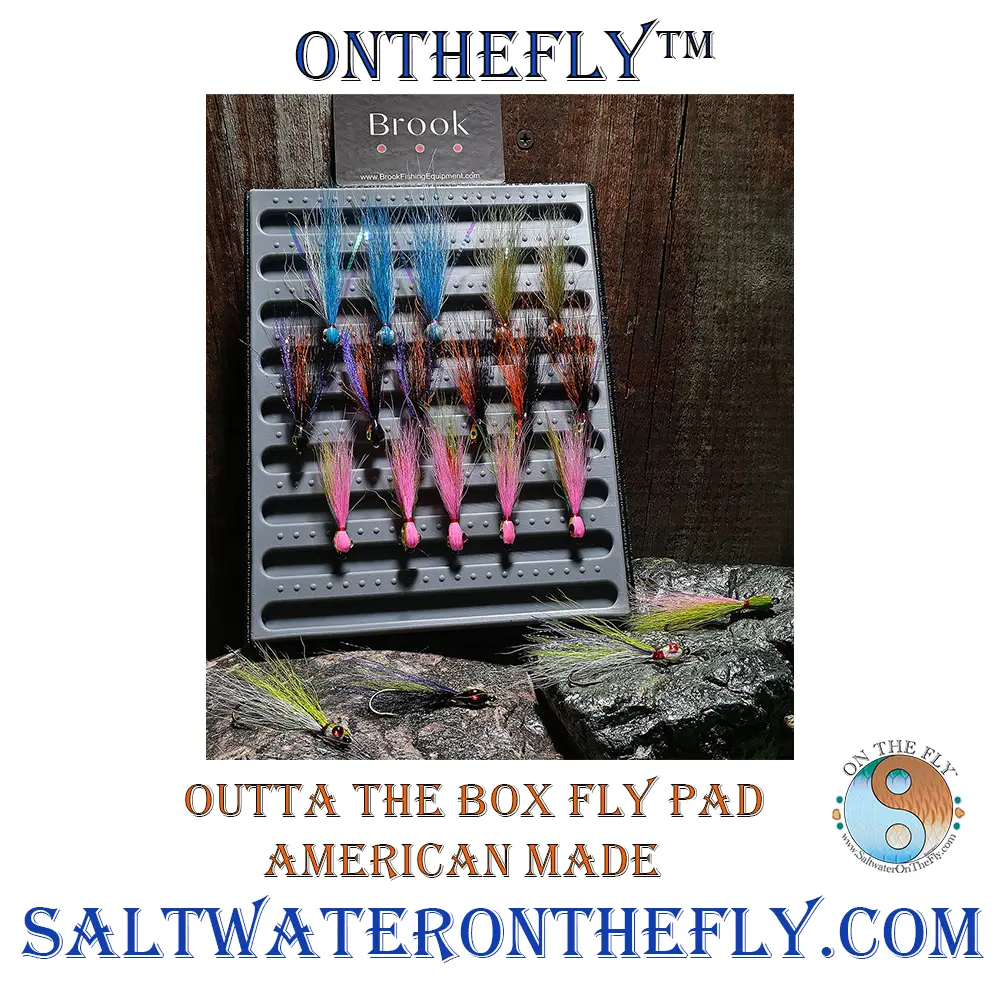
American Made Outta the Box Fly Pad is one of the most perfect ways to store flies while floating. Pad is self healing and allows flies to dry before placing them back in the boat box.
Top Flies That Get Results
Selecting effective fly patterns can significantly improve your chances of success on the water. Among seasoned anglers fishing the Deschutes, certain flies have gained popularity due to their proven effectiveness:
- Freight Trains: With vibrant colors and dynamic movement in water, these are irresistible during early season runs. In freight train bugger style.
- Green Butt Skunks: A classic pattern that performs well throughout different seasons thanks largely to its visibility and enticing silhouette underwater. In green butt bugger style or fashion.
- Prolific Caddis Varieties: During hatch seasons especially summer months when caddisflies are abundant these imitations can lead you into thrilling dry fly action as dusk falls over Central Oregon’s stunning landscapes.
- Dry Fly Fishing: This method comes alive particularly around hatches like March Brown mayflies, Salmonfly, Pale Morning Dun. Using floating lines paired with delicate leaders helps present these dry flies effectively mimicking natural insects landing softly upon surface waters thus triggering strikes from wary trout looking upwards towards skies.
For more detailed information about tying some of these popular patterns yourself or where you might purchase flies ready-made, check out resources available here like John Shewey’s Spey Flies Book. Or learn about Steelhead Fly Fishing in Michigan.
The Role of Water Conditions on Deschutes River Fly Fishing
Selecting the right gear is just part of the puzzle; grasping how shifts in aquatic environments influence fish actions is crucial for fishing triumphs across diverse areas like Upper, Middle, and Lower sections. Monitoring temperatures and flows help make informed decisions on timing visits to align with migratory peaks and periods of optimal feeding activity, whether chasing after elusive Steelheads or seeking hefty Trout populations running through crystal clear currents. Navigating through each part, from Upper to Lower sections, requires careful planning and a keen understanding of the distinctive hurdles and bounties they present.
Mastering fly fishing on the Deschutes River means gearing up right and picking flies that work. Spey casting is your best bet for covering big water, especially with rods suited for the task. Don’t forget, knowing when to hit the river, based on water conditions, can make or break your trip.
Prime Fishing Locations from Headwaters to Columbia
Finding the perfect spot along the Deschutes River, stretching miles long and hosting a variety of fish species, can feel like searching for a needle in a haystack. But don’t worry; we’ve got you covered with insider tips on accessing prime fishing locations from its headwaters all the way down to where it meets the mighty Columbia.
Mack’s Canyon: A Steelhead Haven
If steelhead are what you’re after, Mack’s Canyon is your go-to destination. This area is particularly famous for its summer and early season steelhead runs starting in July through late September. Here, anglers find themselves amidst good numbers of these spirited fish due to favorable water temperatures that encourage migration from the Pacific Northwest back into freshwater tributaries like the Deschutes.
Accessing Mack’s Canyon can be an adventure itself but trust me when I say it’s worth every bit of effort. Venturing to this spot, the handbook for arriving at Mack’s Canyon dishes out handy tips on maneuvering through the landscape and making the most of your stay beside these bountiful streams.
The Upper Deschutes: Trout Creek To Harpham Flat
Moving upstream towards central Oregon lies another gem – Trout Creek to Harpham Flat section which offers diverse opportunities for both novice and seasoned fly fishers alike. This stretch boasts abundant trout populations running alongside picturesque landscapes that scream ‘wilderness’.
Understanding river access points along this route is crucial as some areas may require hiking or even drifting by boat or raft. Whether you’re eyeing prolific hatches during springtime such as March Brown or Pale Morning Dun events or aiming for big catches during Salmonfly season around May-June timeframe – knowing where and how to get there makes all difference.
Navigating The Lower Stretch Towards Columbia River
Last but not least, as we journey downstream towards where Deschutes kisses Columbia River goodbye at Lake Billy Chinook before flowing south again – this lower segment unveils unique challenges coupled with rewarding catches including great size mountain whitefish among other resident trout species.

Sun Protective Graphic Brown Trout Gloves are great late spring into early fall. UPF-50, with a stripping guard on finger and fingerless makes changing flies easy. Once the cold weather sets in the SFT Gloves are the perfect glove. These are great for duck hunting as well.

A successful expedition here often involves adapting tactics according to current conditions (like using poly leaders) while staying vigilant about changing water flows which could affect day drift strategies significantly. Dive into our in-depth strategy manual for mastering the art of angling diverse trout populations throughout the year, ensuring your adventure in this region is both fruitful and memorable.
Unlock the best fishing spots along the Deschutes River, from Mack’s Canyon for steelhead to Trout Creek for abundant trout. Each location offers unique challenges and rewards, with insider tips on access and strategies to make your trip a success.
Navigating Access Points and Transportation Methods
Finding your way to the prime fishing spots along the Deschutes River, stretching from its headwaters down to where it greets the Columbia River, can feel like piecing together a puzzle. But fear not, with options ranging from drift boats to mountain bikes, you’re covered whether you prefer water or land routes.
Choosing Your Watercraft Wisely Deschutes River Fly Fishing
Drift boats are synonymous with river fly fishing for a good reason. Drift boats, with their balance and ample room for equipment, demand adept steering skills. Rafts present a more forgiving option on rougher patches of water, and jet sleds provide speed for covering larger distances quickly. However, each has its place depending on the stretch of river you’re targeting.

Hiking and fly fishing along the Deschutes River sun protection is important. Graphic Hoodie Secluded Brown is a UPF-50 with a sewn in face mask.
Rafts excel in shallower areas where rocks may pose threats to more rigid hulls; meanwhile, jet sleds shine when moving between distant access points is necessary—think major stretches like Warm Springs down to Maupin area. Yet remember: these vessels need different handling techniques which might influence your choice based on experience level.
Hitting The Trails On Two Wheels Or Feet
If dry land calls out more than wavy waters do, then consider hiking or mountain biking alongside parts of the Deschutes River that run through stunning landscapes only Central Oregon can offer—from dense pine forests near Lake Billy Chinook all the way south past Steelhead Falls towards Harpham Flat near Maupin. Along the Deschutes River hiking there are rattlesnakes. I have encountered a few on trips.
Trails vary widely in difficulty; some paths near South Junction are perfect for beginners while others closer to Mack’s Canyon demand more stamina and expertise due to both their length and terrain challenges encountered en route.
The Importance Of Planning Ahead
No matter how you choose to get there, planning ahead is key, especially during peak seasons like steelhead trout migrations in late September or when salmon flies hatch in early summer, drawing anglers from across the Pacific Northwest eager to catch trophy fish using nothing but wit and cunning matched with a perfectly tied fly at the end of the line. Don’t forget to check local fishing reports before heading out; they’ll give invaluable insights into what to expect in terms of weather conditions and current flows, which could greatly affect your success on any given day. Embark on your journey with the assurance that preparation is your steadfast ally in navigating the unpredictable tides of adventure.
Exploring the Deschutes River from headwaters to Columbia is an adventure with many paths. Whether by drift boat, raft, jet sled, bike, or on foot, choose your mode of transport wisely based on the river’s conditions and your own skills. Always plan ahead for weather and water flows to make sure you’re ready for what awaits.
The Art of Spey Casting on The Deschutes River
Spey casting is not just a fishing technique; it’s akin to performing a graceful dance along the banks of the majestic Deschutes River. In these currents, veterans in pursuit of steelhead opt for this technique as it seamlessly combines productivity with the ease of sweeping more territory without much strain.
Why do anglers favor spey casting here? It’s simple. The wide expanses of the Deschutes, especially when aiming for those elusive steelheads from July through New Year’s Eve peak season, demand a technique that can handle its challenges. With spey casting rods ranging between 12 to 13 and a half feet for 6 or 7 weights, you’re well-equipped to make those long swings across the currents.
I really like using a Prestige 11′ 8-weight switch rod for steelhead swinging intruders. American Made Custom Spey Reels are the ticket to getting the job done.
Fly patterns play an equally pivotal role in this angling equation. Favorites like Freight Trains, Green Butt Skunks, and Steelhead Shimmers are not just whimsically named bits of feather and fluff; they’re proven warriors against some pretty discerning fish. These flies have something special about them that tempts even the wariest steelhead into biting — perhaps it’s their lifelike pulsation in water or maybe their vibrant colors mimicking local prey.
Navigating Prime Fishing Locations from Headwaters to Columbia
Discovering your own sweet spot along the river could be part of your personal spey-casting saga. From Mack’s Canyon all the way down to where this mighty river meets Columbia lays a stretch filled with promise for DIY anglers. Here’s where you might start your journey. And let’s not forget areas like Trout Creek up towards Harpham Flat which offer diverse opportunities whether you’re chasing after summer steelhead or resident trout populations running throughout various sections of this legendary Pacific Northwest river.
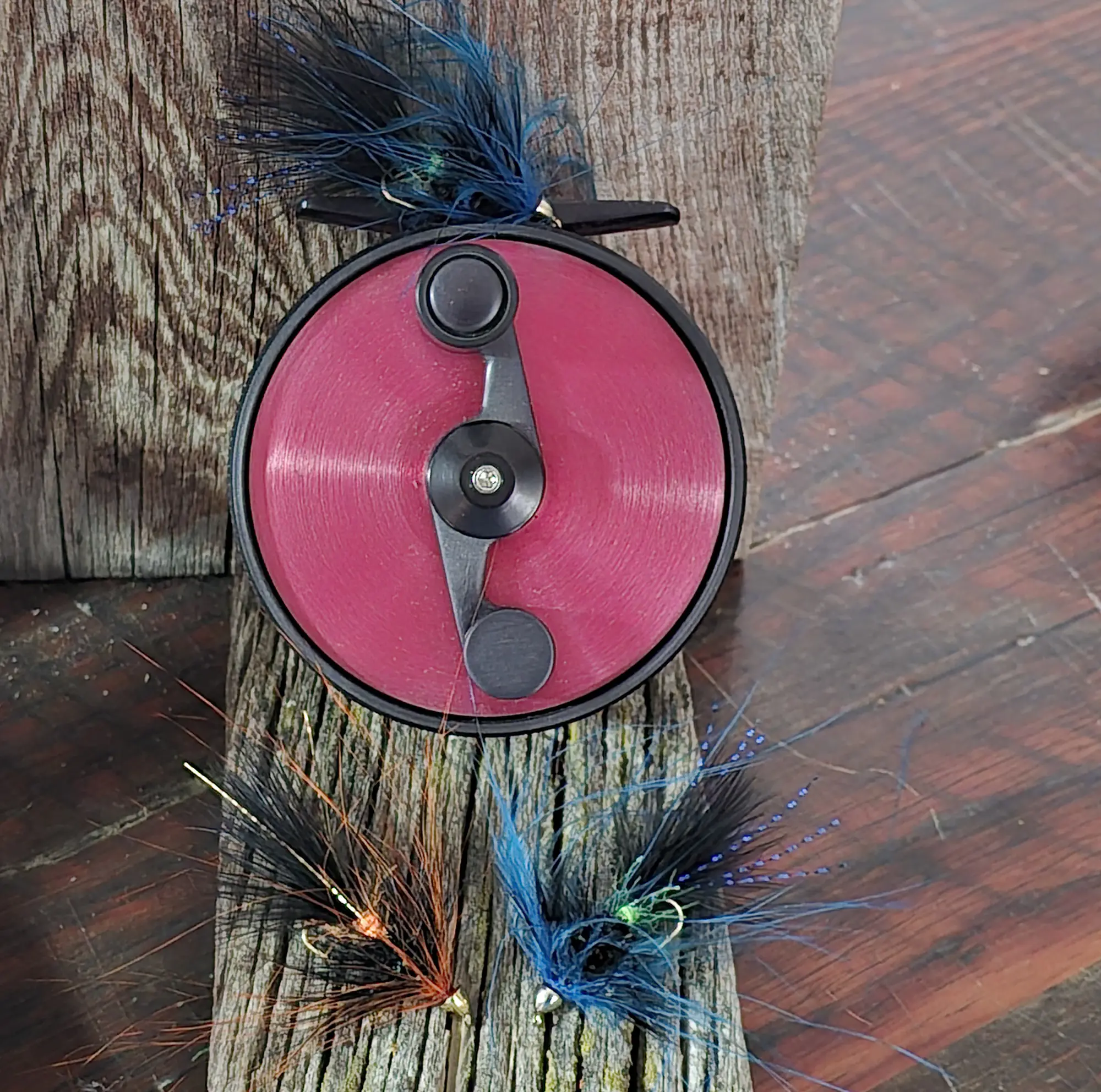
Custom American Made Spey Reel & Spey Flies

Switch Rod Fly Fishing Deschutes River for Steelhead
In essence, mastering spey casting on The Deschutes demand respect for its rhythms – understanding how migratory counts peak around August can help time your visit perfectly. Exploring different techniques tailored towards varied species, including mountain whitefish vs summer steelheads also proves beneficial as each presents unique challenges demanding specific strategies.
Master spey casting on the Deschutes for an efficient, effective way to catch elusive steelheads. Discover prime spots from Mack’s Canyon to Columbia and use proven fly patterns like Freight Trains for success.
Camping Along The Deschutes – What You Need To Know
Embracing the rugged beauty of the Deschutes River, especially when it meanders down to meet the mighty Columbia, is an adventure that calls for some basic but crucial camping knowledge. Prepare yourself; this isn’t your average backyard campout.
Expect Basic Conditions While Deschutes River Fly Fishing
The allure of river fishing often leads anglers and adventurers alike to spend nights under the stars along the Deschutes. But remember, facilities here are minimal at best. Whether you’re setting up a tent near Warm Springs or finding a spot closer to where these waters join with those of the Columbia Gorge area, anticipate dry conditions. There’s little in terms of modern conveniences out here—no showers or fancy toilets—so pack accordingly.
Besides packing enough water and food, bringing sturdy tents and sleeping bags designed to withstand strong winds becomes essential. Those who’ve braved nights by these rivers know all too well how quickly weather can turn from serene to stormy.
Navigating Windy Nights Near the Columbia Gorge Area
Speaking of wind, let’s talk about what awaits near the confluence with the mighty Columbia—the gusts can be relentless. This section demands extra attention when pitching your tent; seek natural shelters like boulders or trees (where available) that can serve as windbreaks. Securing your gear is also critical unless you want parts of it embarking on an unplanned journey downstream.
This unique challenge does come with its perks though—a night sky unspoiled by city lights offers stargazing opportunities that are second to none. Just make sure your campfire (if allowed in certain areas) is well-managed because sparks flying into dry brush could spell disaster.
Packing Essentials For Your Adventure Deschutes River Fly Fishing
Your checklist should include more than just fishing gear if tackling this stretch from headwaters down through central Oregon towards its grand junction at Lake Billy Chinook before finally greeting Colombia’s wide embrace. Knowing what essentials to bring will ensure not only success on catching trout populations running rampant during early season steelhead runs but safety throughout overnight stays:
- Durable water containers – hydration is key,
- A high-quality tent paired with a sleeping bag rated for colder temperatures,
- A portable cooking stove since open fires may not always be permitted,
Keeping these pointers in mind doesn’t only elevate your angling adventure—it metamorphoses it into a legendary journey beside the Pacific Northwest’s emblematic waterways.
Ready for a Deschutes camping adventure? Pack smart with water, sturdy tents, and essentials to brave the basic conditions and windy nights. Remember, it’s all about embracing nature without modern comforts.
Role of Water Conditions in Deschutes River Fly Fishing Success
Grasping the impact of water temperatures and currents on how fish act is key to nailing fly fishing on the Deschutes River. The right conditions can turn an average day on the river into a memorable one, teeming with catches.
Monitoring Water Temperatures
The significance of keeping tabs on water temperatures cannot be overstated when planning your fly fishing adventure. Fish are sensitive to temperature changes, which directly affect their feeding patterns and activity levels. For instance, trout prefer cooler waters ranging from 50-60°F, becoming more active as temperatures fall within this sweet spot. The inclination of fish towards cooler temperatures underscores the reason why dawn and dusk in the summertime emerge as optimal moments for fishing endeavors.
To stay informed about current water temperatures along different stretches of the Deschutes River, visiting reliable fishing reports becomes indispensable. Such platforms offer not just the latest measurements of water warmth but also delve into understanding the impact these metrics have on aquatic life’s patterns and activities.
Influence of Flows on Fish Behavior
The speed at which a river runs significantly influences the positioning and movement patterns of fish, guiding them to different habitats based on current strength. High flows might push them towards banks or slower-moving side channels as they seek refuge from strong currents. Conversely, lower flows expose more feeding grounds and resting spots such as behind boulders or in deep pools where anglers can target them effectively.
An understanding of seasonal variations helps too; for example, spring runoff increases river volumes significantly impacting both access points and favored habitats among resident species like trout populations running through various sections including south junction areas near Maupin down to Warm Springs area around Steelhead Falls – each presenting unique challenges based off current conditions which seasoned angler’s adeptly navigate by adjusting techniques accordingly whether it’s opting for heavier nymph rigs during high-water events or lighter dry flies amidst stable summer lows aimed specifically at enticing wary surface feeders amongst prolific caddis hatches that emerge under ideal circumstances further underscoring importance staying attuned shifting environmental dynamics essential achieving consistent results irrespective specific location chosen along vast miles long stretch encompassing everything headwaters Lake Billy Chinook down confluence mighty Columbia itself showcasing diverse ecosystem unparalleled opportunities enthusiasts all skill levels embrace alike.
Keep an eye on water temps and flows for fly fishing success on the Deschutes. Early mornings or late evenings are best during summer, as trout thrive in cooler waters. Check fishing reports for current conditions and adjust your techniques to match the river’s changing dynamics.
Fishing Ethics & Conservation Practices on The Deschutes
Angling in the pristine waters of the Deschutes River is not just about casting your line and hoping for a bite. Delving into the heart of fishing on the Deschutes River transcends mere luck; it’s a pledge to uphold traditions that guarantee this splendid activity thrives for those who follow in our footsteps. Embarking on a journey of preservation starts with the adoption and implementation of responsible angling practices.
Respecting Wild Trout Populations
Deschutes’ wild trout aren’t merely aquatic creatures; they embody essential cogs within the river’s ecological machinery. Practicing catch and release with these native species is crucial. But it goes beyond merely returning them to water – handling fish properly minimizes stress and physical damage, increasing their chances of survival post-release. Wet your hands before touching, avoid removing them from water if possible, and use barbless hooks for easier removal.
Beyond individual actions, staying informed through fishing reports helps anglers understand current conditions such as spawning times or areas under ecological strain where fishing might be temporarily discouraged or limited.
Sustainable Fishing Techniques
Fly fishing inherently promotes a more sustainable interaction with aquatic environments compared to other methods due to its selective nature and minimalistic approach. However, using specific techniques can further reduce our footprint on these habitats. For instance, spey casting allows you to keep lines off the water longer, minimizing disruption in sensitive areas like spawning beds or near shorelines where vegetation provides critical habitat.
Selecting appropriate gear also plays a role in conservation efforts—opting for single-hook flies over treble hooks reduces injury rates among caught fish significantly—a simple switch that has profound impacts on local populations’ health over time.
Educating Others About Responsible Angling
A core component of angler ethics involves sharing knowledge about responsible practices with others within our community—the idea being that collective action drives meaningful change across entire ecosystems faster than isolated efforts ever could. Hosting workshops at local clubs or simply taking time during guide trips (more info here) to discuss topics ranging from proper catch-and-release techniques to identifying signs of environmental distress among fish populations makes all participants stewards of rivers like The Deschutes. This communal education isn’t just beneficial—it’s necessary for long-term sustainability.
Deschutes River Fly Fishing Tip:
Fishing the Deschutes responsibly means embracing conservation. Wet your hands before handling fish, use barbless hooks for easy release, and choose sustainable techniques like spey casting to protect the ecosystem. Share knowledge on ethical practices with fellow anglers to ensure future generations can enjoy fishing too.
The Impact of Dams on Fish Migration Patterns
Constructions such as Pelton Dam significantly alter the environment, notably by modifying the traditional migration paths of creatures like steelhead in the Deschutes ecosystem. While dams provide essential services to humans, including hydroelectric power and irrigation support, their presence disrupts the age-old paths that fish traverse to spawn.
Pelton Dam’s Role in Migratory Disruption
The installation of Pelton Dam fundamentally altered the landscape through which the Deschutes River flows. Before this structure came into existence, steelhead and other aquatic species freely moved throughout these waters. The dam not only blocks physical passage but also affects water temperatures and flow rates—both critical factors in fish migration patterns.
Dams create barriers that can prevent fish from reaching their spawning grounds—a necessary journey for reproduction. As a result, populations of migratory species like steelhead are at risk unless mitigative measures are put in place.
Efforts to Mitigate Impacts
To combat these negative effects, wildlife conservationists and engineers have developed innovative solutions such as fish ladders and bypass systems around dams like Pelton. These structures aim to replicate natural river conditions as closely as possible allowing for safer passages for migrating fishes.
Despite these efforts, challenges remain with ensuring all species can successfully navigate past barriers introduced by human development. Learn more about current mitigation practices here.
The Bigger Picture: Ecosystem Health
The impact of dams extends beyond individual migration patterns; it touches upon broader ecological concerns too. Changes brought by dams affect sediment transport—which is crucial for maintaining habitat downstream—and alter predator-prey dynamics by creating stagnant pools where fast-moving rivers once flowed.
This disruption necessitates ongoing monitoring and adaptation strategies to preserve both biodiversity within rivers like the Deschutes and ensure sustainable fishing opportunities continue well into future generations. More ought to be done with ecosystem management efforts along impacted waterways.
- The introduction of fish ladders is a beacon of optimism, yet it underscores the perpetual battle with the unforeseen repercussions that accompany advancement.
- Mitigation projects serve as vital lifelines supporting genetic diversity among salmonid populations affected by man-made obstacles.
- Educational outreach programs underscore the importance of educating the public regarding the roles everyone plays in conserving precious freshwater ecosystems.
Deschutes River Fly Fishing Tip:
Dams disrupt fish migration in the Deschutes, but innovative solutions like fish ladders help. It’s a balance between human needs and preserving nature.
Tackling Varied Trout Species Across Seasons
Tactics for Summer Steelhead
When you’re after summer steelhead on the Deschutes, timing is everything. These fish make their way upriver starting in July, but August sees the migratory counts peak. To catch them, start with spey casting—a method that lets your line dance across the water without spooking these wary travelers. Equip yourself with a 12 to 13 and a half foot rod for 6 / 7 or 8 weights to get those Freight Trains and Green Butt Skunks out into the seas where steelhead love to roam.
Choosing the right flies can drastically enhance your catches in this period. Besides the mentioned patterns, adding Steelhead Shimmers to your arsenal could be a game-changer as they mimic the small baitfish these mighty fish feast on during their journey.
And let’s not forget about location—Mack’s Canyon is a hot spot from late September onwards as temperatures drop and steelheads continue their upstream push towards Lake Billy Chinook. Venturing towards South Junction might unveil quieter waters, offering a serene alternative for those looking to escape the hustle.
Nymphing For Resident Trout
The Deschutes isn’t just about steelhead; its resident trout populations run thick throughout various sections of the river too. Nymphing proves highly effective here due to consistent hatches that keep fish feeding sub-surface most times of the year.
A good nymph setup includes using poly leaders paired with strike indicators so you can adjust depth quickly depending on where you see or suspect trout are holding. Flies like Lightning Bugs or Pale Morning Duns work wonders in early season before transitioning to more substantial meals like Salmon flies come springtime.
Areas such as Warm Springs offer great opportunities thanks partly due-to cooler water temperatures which attract plenty of both mountain whitefish and trout seeking refuge from warmer stretches downstream near Maupin area and beyond toward Crooked River junctions.
Leveraging Hatch Seasons
Hatch seasons open doors—or rather rivers—to fly fishing nirvana on The Deschutes if played right because nothing beats matching what’s naturally abundant in terms of prey items available for hungry trout above surface level eating habits switch gears drastically through months revealing key strategies one must adopt adapt successfully amidst changing conditions presented by nature itself thus learning recognizing when exactly March Browns hatch compared say Caddis flies will determine whether day drift turns fruitful expedition otherwise potentially fruitless endeavor despite best efforts invested beforehand preparation wise meaning keeping tabs local fishing reports become crucial aspect ensuring time spent waterside maximizes potential catches made end day.
To nail that catch on the Deschutes, timing and technique are your best friends. Use spey casting for summer steelhead starting July, especially around Mack’s Canyon come late September. For resident trout, go nymphing with flies like Lightning Bugs or Pale Morning Duns in cooler spots like Warm Springs. Always match your hatch to what’s abundant; it could turn an okay day into a great one.
FAQs in Relation to DIY Deschutes River Fly Fishing Headwaters to Columbia River
Does the Deschutes River flow into the Columbia River?
Yes, it does. The Deschutes makes its grand finale by merging with the mighty Columbia.
Where is the best place to fish in the Deschutes River?
Mack’s Canyon to Harpham Flat shines for steelhead and trout, making it a top pick for anglers.
What do I need to fish the Columbia River?
A valid fishing license, barbless hooks for salmon and steelhead, and knowledge of current regulations are must-haves.
Are barbless hooks required on the Deschutes River?
In certain sections targeting specific species like salmon and steelhead, yes, you’ll need those barbless hooks ready.
Conclusion of Deschutes River Fly Fishing
Embarking on your DIY Deschutes river fly fishing Headwaters to Columbia River journey, you’ve geared up for success. Key takeaways? Timing is everything; know when steelhead and trout runs peak. Your gear matters; choose wisely from spey rods to dry flies.
Spotting the right location boosts your chances. Traveling from Mack’s Canyon all the way to Harpham Flat unveils a myriad of unique fishing prospects. Mastering spey casting can set you apart in these waters.
Camping by the river adds adventure but comes with its challenges—prepare accordingly. The behavior of fish is deeply influenced by the state of the water—keeping updated is crucial.
Conservation isn’t just a practice; it’s our duty for future generations of anglers. Remember, every cast carries not just hope for a great catch but also responsibility towards preserving this majestic waterway.
Dive into DIY Deschutes river fly fishing Headwaters to Columbia River fully equipped and mindful of nature’s balance—it makes all the difference between good fishing and great stories.
From Steelhead to Salmon in Alaska
Keep the journey Going on a Wilderness Float or stay at the lodge. Fly Fish Alaska, or Fly Fish Iceland.



